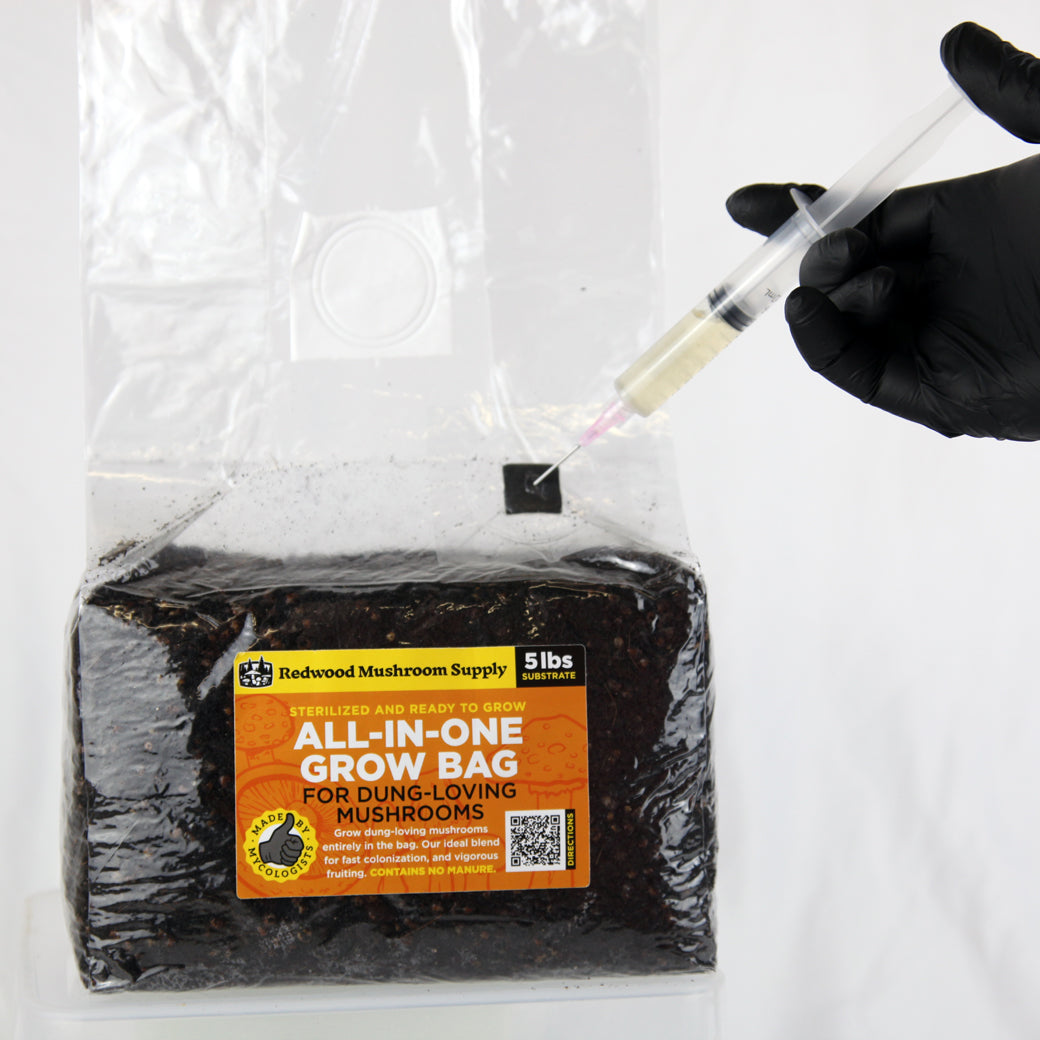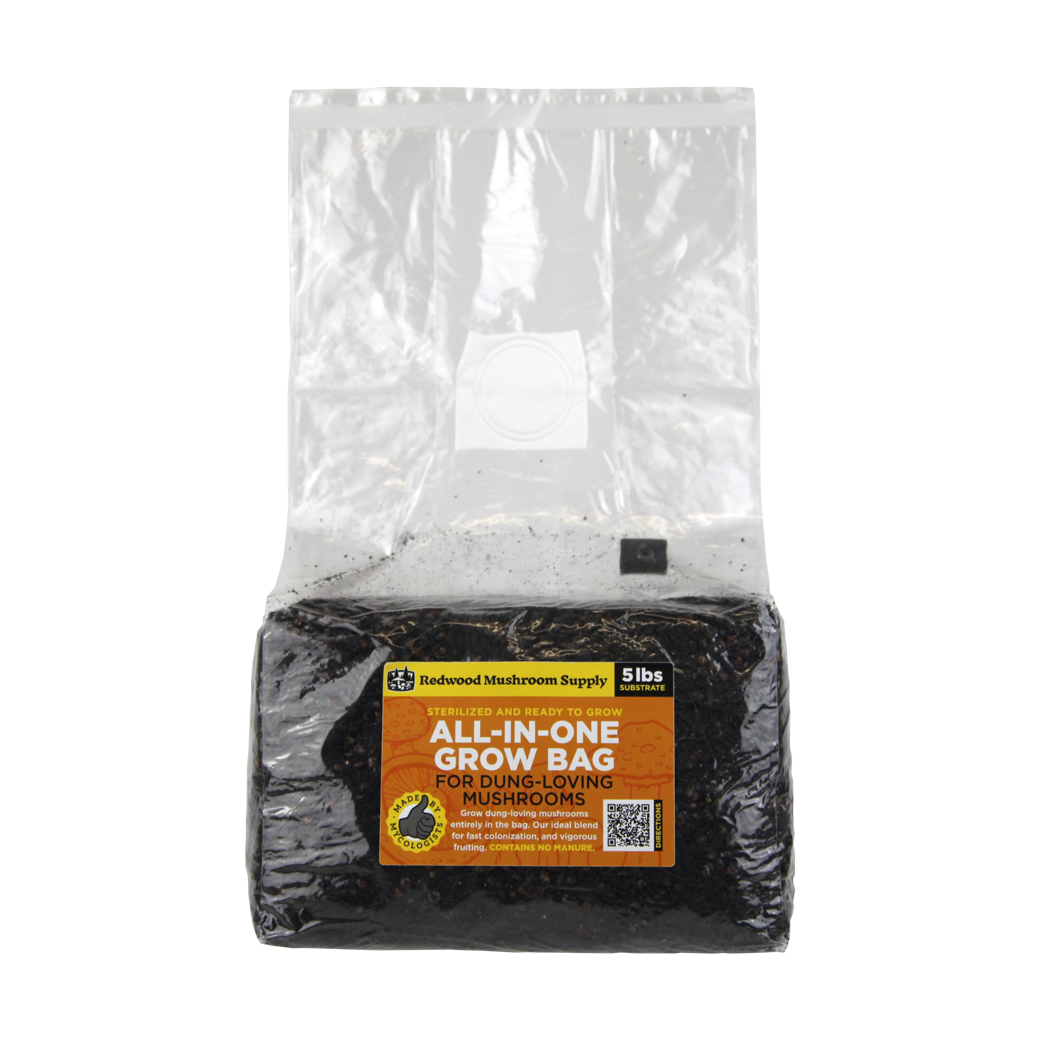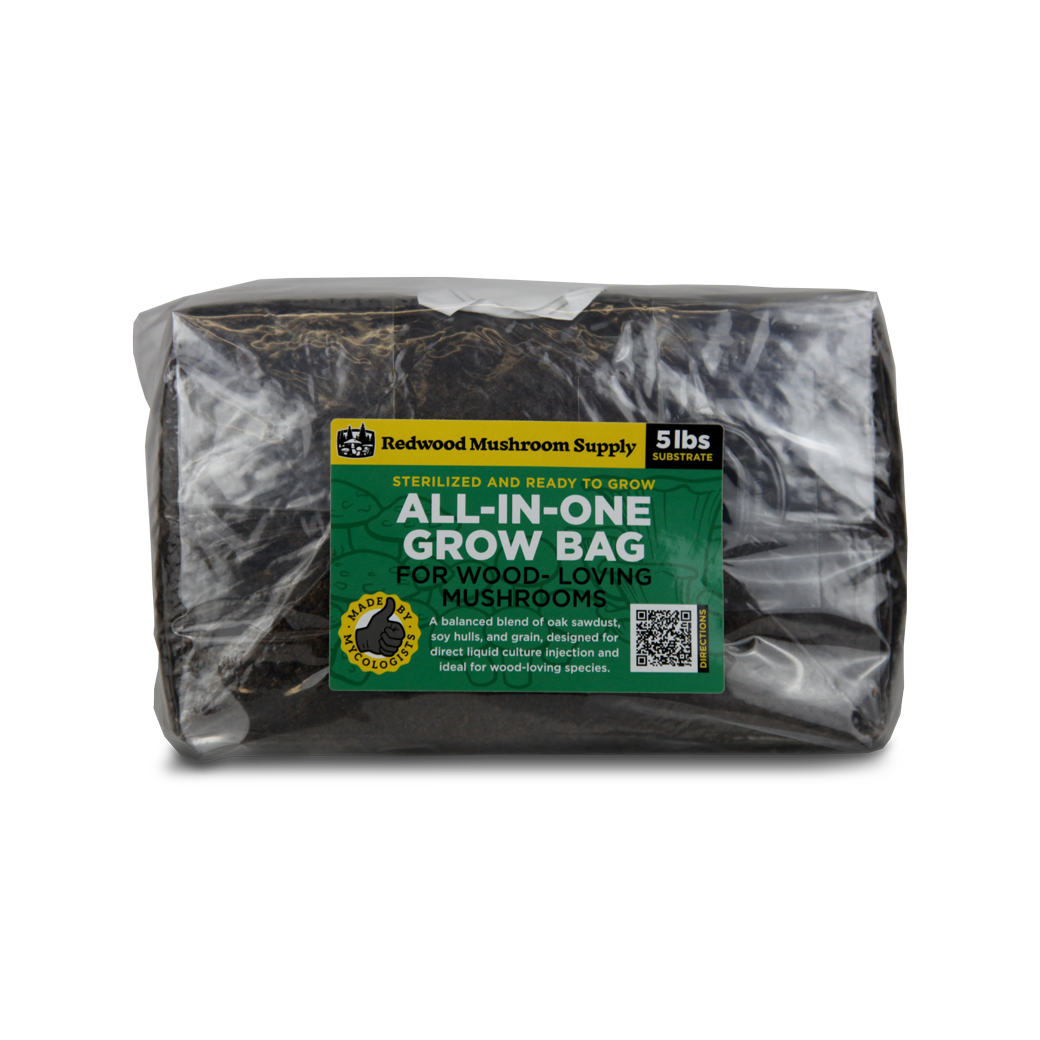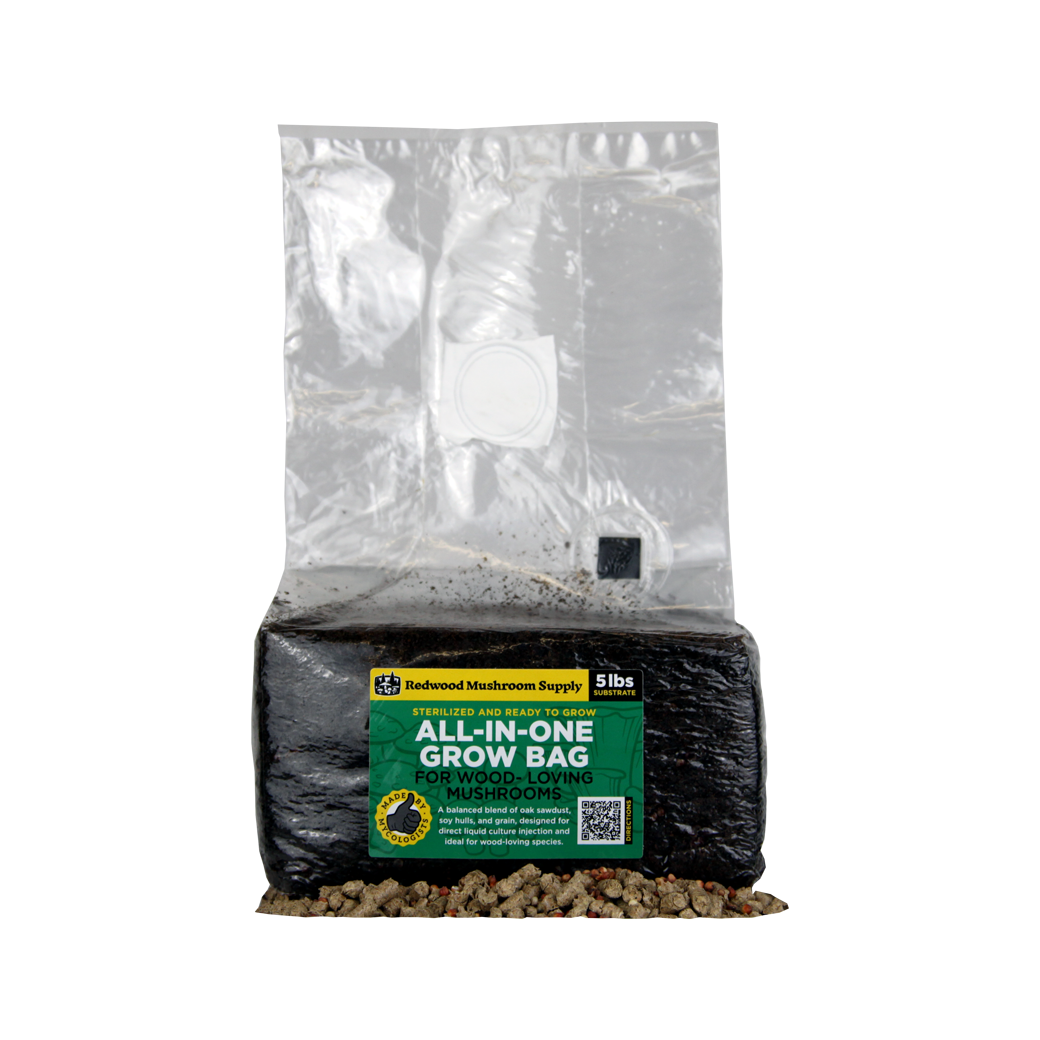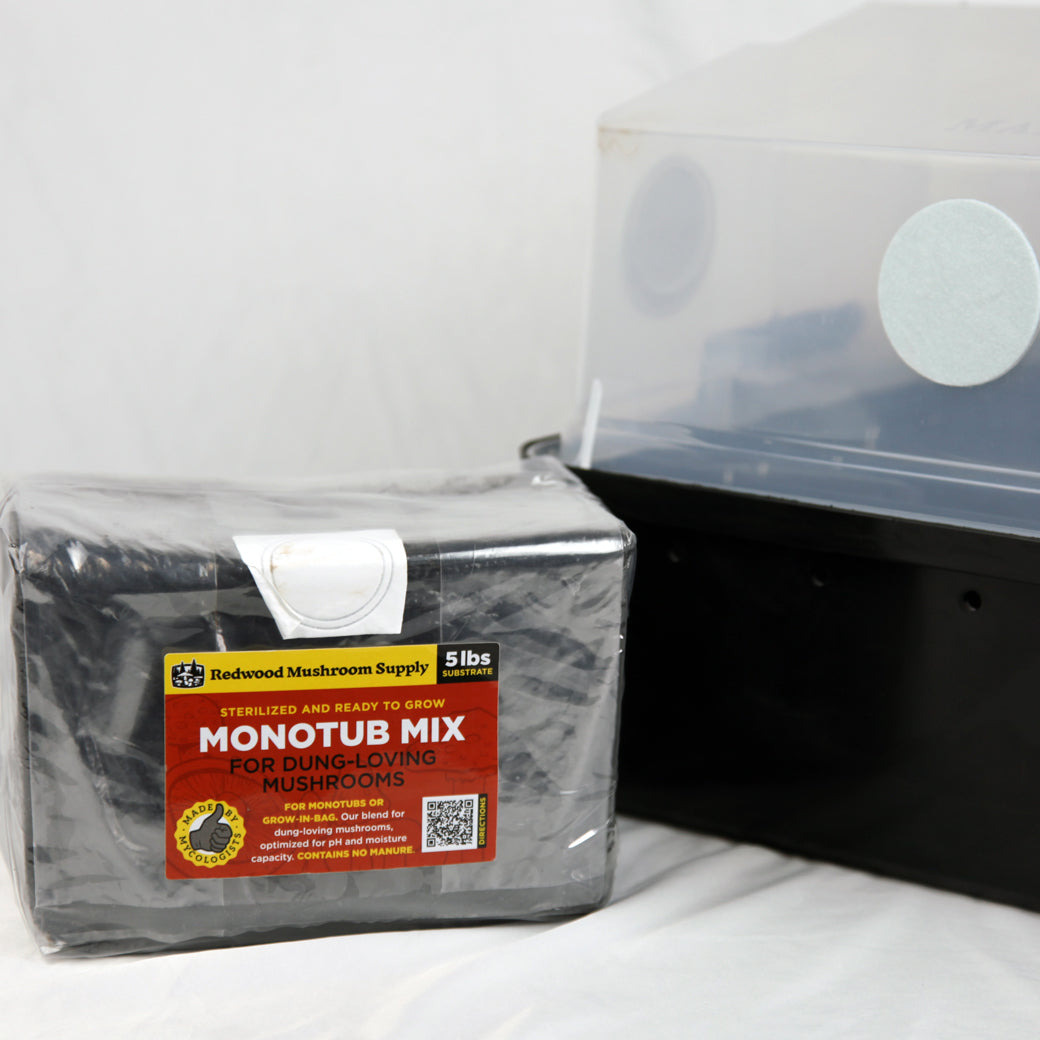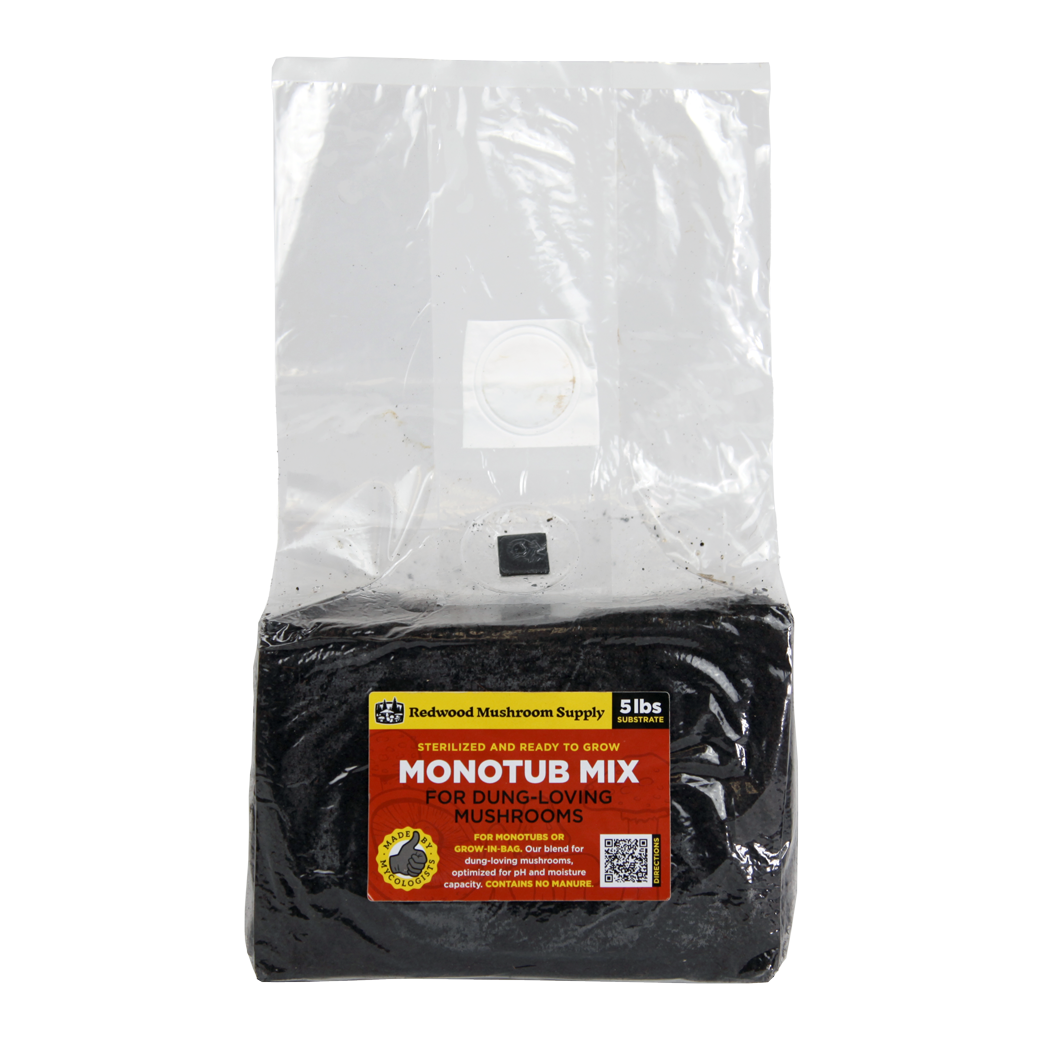Contamination is any microorganism in the substrate that gets in the way of your goals. It's inevitable, sometimes showing up when you’ve done everything right... but doesn’t mean your mushrooms are lost! If you suspect something is wrong, quarantine any affected mycelium and monitor for 1-2 weeks - oyster mushrooms will often overtake contamination to fruit beautiful, healthy mushrooms.
Bacterial Contamination
Signs: Patchy, slow colonization, foul odors, slimy textures, yellow spots on fruiting bodies.
Causes: Too much nitrogen (especially in over-supplemented media), too much moisture, overheating substrate, anaerobic pockets.
Management:
- Reduce supplementation, especially nitrogen-heavy additives like alfalfa.
- Check substrate for field capacity (does not release water when squeezed) before inoculating
- Ensure proper drainage and avoid over-watering during fruiting.
- Increase air exchange - bacteria thrive in stagnant conditions.
- Lower incubation temperatures below 72°F to slow bacterial growth.
Trichoderma
Signs: Green patches in substrate, often found on older mycelium or when conditions are poor
Causes: Poor air exchange, lack of nutrients (often after 2nd flush), exposure to direct sunlight; trichoderma is everywhere, but usually only grows on weakened mycelium - it's often a sign of environmental issues, like pests, heat, or poor air exchange
Management:
- Maintain incubation temperatures between 68°F and 72°F to encourage healthy mycelium
- Immediately remove bags or containers with green patches larger than a quarter
- If growing indoors, increase air exchange
- Compost substrate after 2 flushes if trichoderma becomes prevalent
Black Pin Mold
Signs: Thin gray mycelium with tiny black spores.
Causes: These molds are often spread by insects during incubation when temperatures are above 70°F
Management:
- Use yellow sticky traps to suppress gnats.
- Increase the spawn rate to 10-20% by weight.
- Keep temperature below 70°F during incubation.
How to Respond
Contamination is as much a part of mushroom cultivation as mushrooms themselves. It can be discouraging, but everybody - even professionals - encounter it regularly. If you're just starting to grow mushrooms, keep your response simple: quarantine and monitor. With the exception of trichoderma, mushrooms can handle most contamination without intervention.
Directions for Spot Treating Trichoderma and Black Pin Mold:
- Spray with a hydrated lime solution or a 10:1 bleach solution (only on the green mold, never fruiting bodies).
- Wipe the area with a clean towel and seal with packing tape
- Let any mushrooms finish fruiting under a tree - Trichoderma benefits compost and soil.
I'm still working on this blog! If you have questions or comments, please email me directly at brandon@spawnshroomhouse.com
